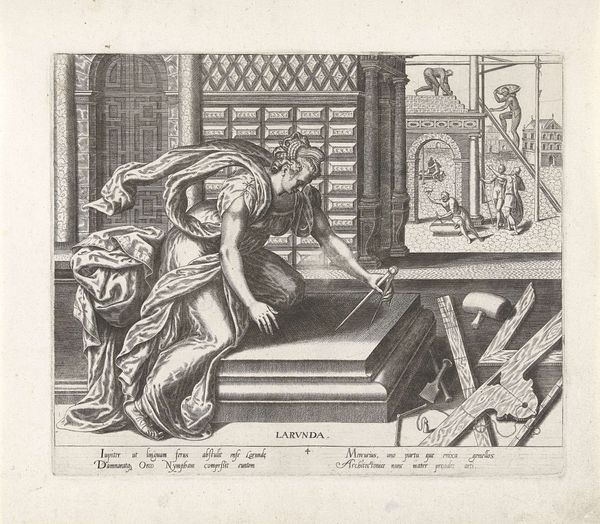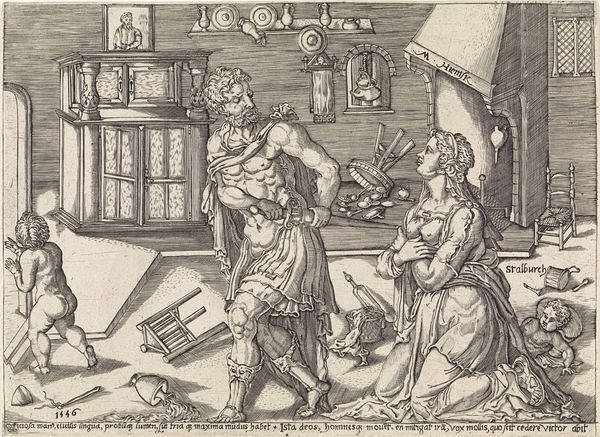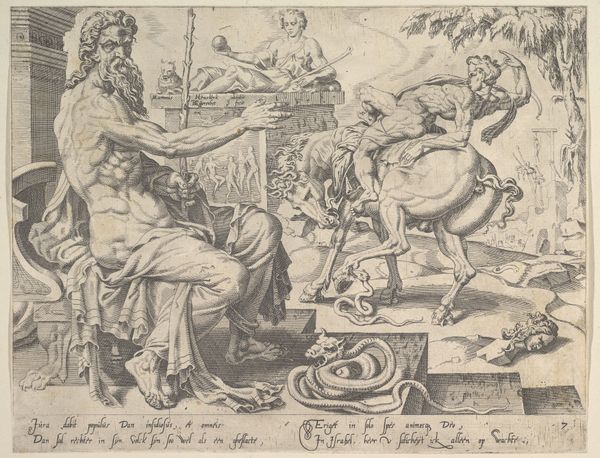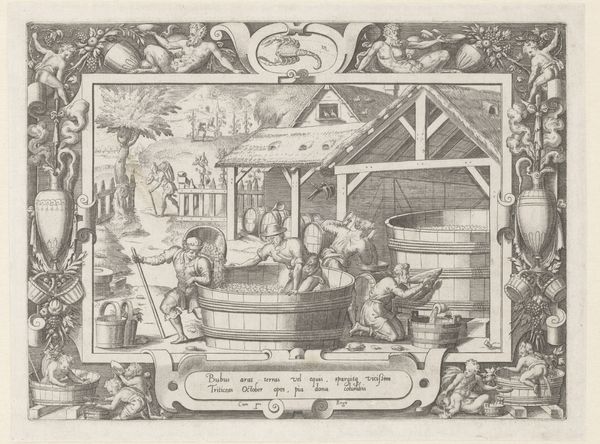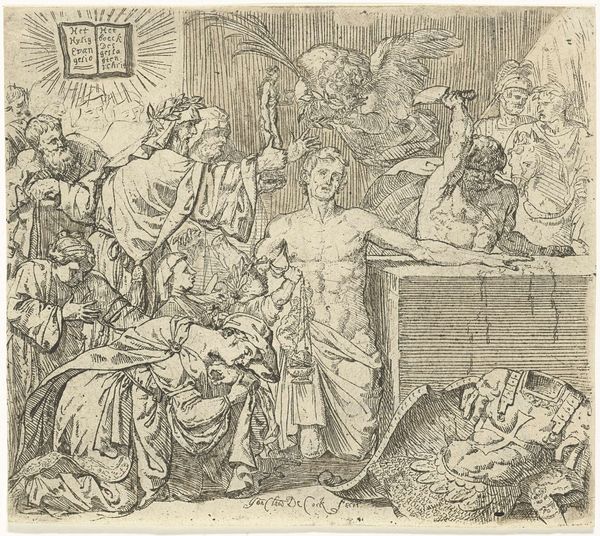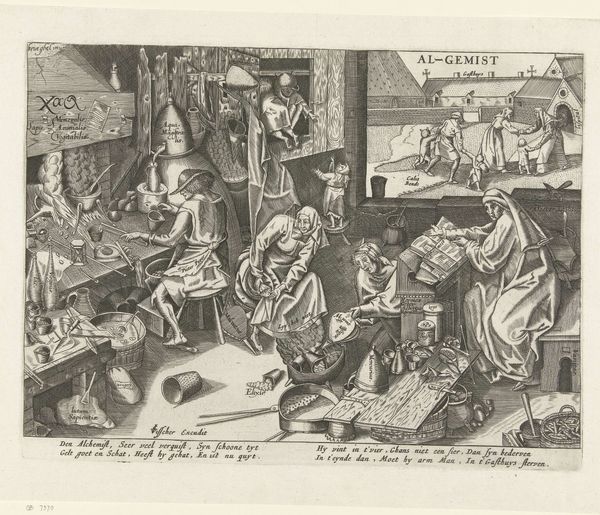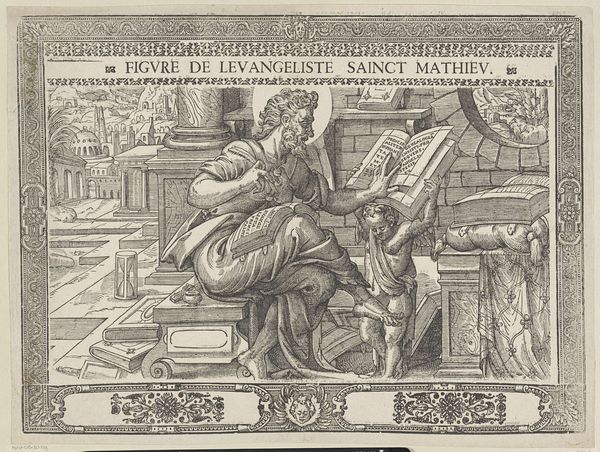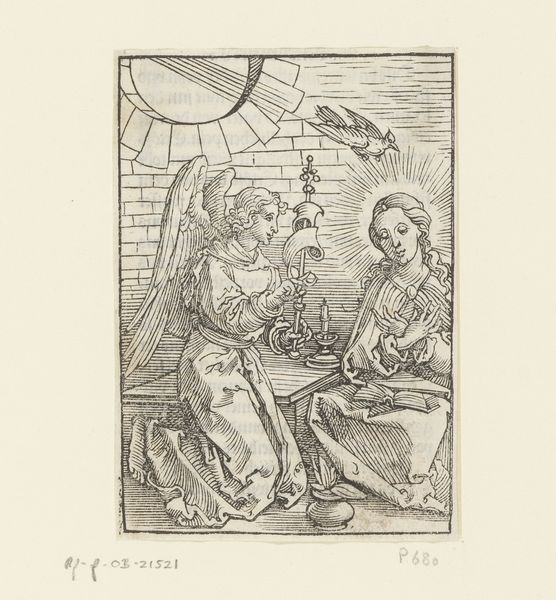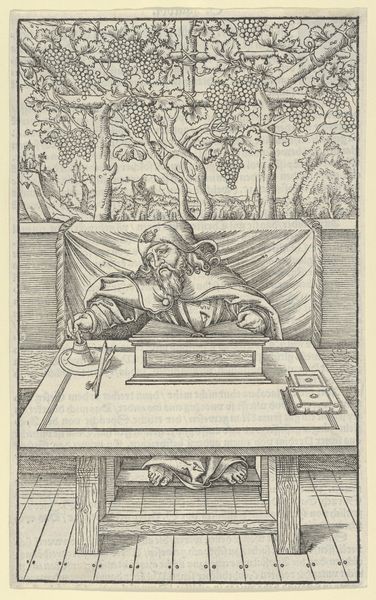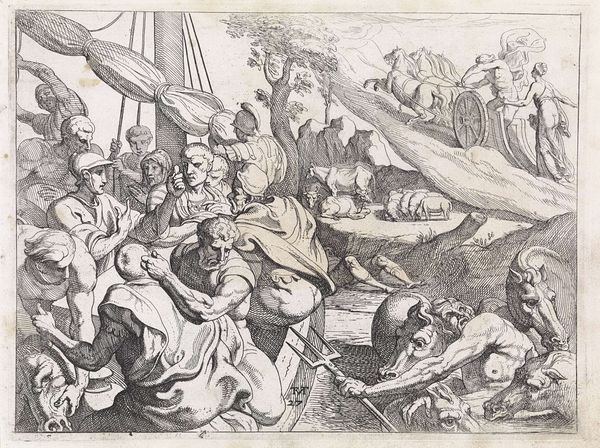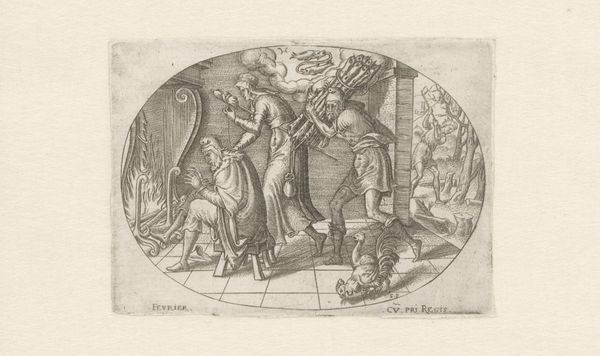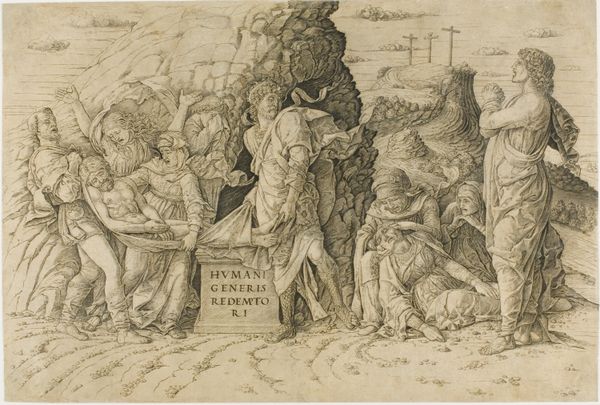
drawing, print, woodcut, engraving
#
drawing
#
allegory
# print
#
woodcut
#
history-painting
#
northern-renaissance
#
engraving
Dimensions: sheet: 5 1/4 x 12 in. (13.3 x 30.5 cm)
Copyright: Public Domain
Curator: Here we have "The Tapestry at Michelfeld," a woodcut and engraving crafted sometime between 1485 and 1528, now residing at The Metropolitan Museum of Art. It's attributed to the workshop of Albrecht Dürer, though pinpointing a single author with these pieces can be tricky. My initial feeling? There’s a stark austerity to this scene, a tension created by the severe lines of the woodcut. Editor: Definitely a somber mood. There’s a kind of brutal dichotomy playing out. We have figures trapped in stocks on one side, then, separately, figures seated in a regal manner with what appears to be a baby in a manger on the other side. Can you give us a bit of context to begin to explain the political messages in this period and in this region? Curator: Right. It satirizes the political infighting and perceived corruption within the Michelfeld Abbey. The figures in the stocks labeled "Truth," "Honesty," and "Reason" symbolize virtues being punished or imprisoned. These figures have had their feet and hands placed in a prisoner's restraining wooden frame. While the cleric presiding on a throne over a child in a crib represents the church benefiting. Dürer’s prints often functioned as tools of social commentary during this period of religious and political upheaval. Editor: That's fascinating! The positioning of the cleric in the artwork with the text above and below— “Ich bindicherrignus” and “Ichbim bie Frußnit”—alongside the pure black ink is evocative of both pride and, in this era, sin. Seeing those virtues bound and the apparent celebration of clerical privilege really hits home. It also reminds us how deeply ingrained the struggles between morality and power were during the Northern Renaissance. Dürer, although dead before the conflict in Michelfeld heated up, knew it could. Curator: Absolutely, it reflects the widespread anxieties surrounding institutional authority. And let’s not forget the incredible skill involved. The minute details achieved with the engraving, especially in depicting the fabrics and the faces, bring an intensity to the allegorical narrative. It forces the viewer to confront uncomfortable truths. The artist used printmaking strategically as an early version of today’s protest posters. Editor: Precisely! The layering of social critique and the way it connects to art history reminds us that so much artwork in museums have very immediate socio-political origins. Thank you. Curator: Thank you, yes a complex image revealing cultural critique.
Comments
No comments
Be the first to comment and join the conversation on the ultimate creative platform.
